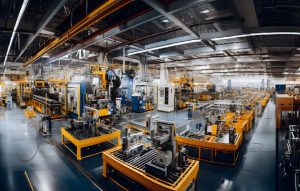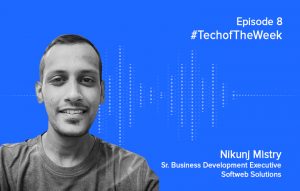According to Statista, “The total installed base of Internet connected devices is projected to amount to 75.44 billion worldwide by 2025, which is a fivefold increase in ten years.” Considering this prediction, the amount of data stored by organizations is impossible to imagine. Moreover, companies need very high processing power to derive any tangible value from such a humungous amount of data. Apart from that, nowadays enterprises are also increasingly looking to improve their business performance and reduce operational costs of their IoT products.
We all know that smart devices are already hitting the market in huge numbers, hence organizations need to understand how new advancements in edge computing practices can be leveraged to their advantage. Enterprises can achieve the ability to increase network performance by reducing latency with edge computing.
Some use cases that prove the future of IoT is at the edge
Industrial manufacturing
Manufacturing is one of the industries that has derived maximum value by deploying Industrial IoT. Manufacturers can collect data to enable better predictive maintenance and energy efficiency by incorporating data storage and computing into industrial equipment. Also, IoT sensors can help to reduce costs and energy consumption by maintaining consistency and productive uptime. The continuous data collection and analysis facilitated by a smart manufacturing solution helps to customize production operations to efficiently meet consumer demands.
With edge computing for an IoT setup, manufacturers that operate in low bandwidth or no bandwidth can benefit phenomenally. For example, oil rigs located in remote areas can use edge computing architecture to collect, monitor and process data on various environmental factors without having to rely on a data center infrastructure that is remote.

How Industry 4.0 is a game changer for factory owners
Webinar agenda
- How Industry 4.0 is a game changer
- The role of IoT and data analytics in the manufacturing industry
- IT/OT Convergence: Why it’s important for IoT adoption
- Current market trends and value
- Smart factory: The evolution not revolution
- Demo and review of smart production line monitoring
- Q&A session
Financial sector
Many banking institutions are implementing edge computing together with smartphone apps to provide services to customers in a better manner. Also, ATMs, banking apps and kiosks work on similar principles – gathering and processing data, making such utilities more responsive by providing users with a broader suite of abilities.
For high-volume trading and finance firms, even a millisecond of delay in a trading algorithm computation can lead to huge losses. The edge computing architecture is placed near the stock exchange data servers to run resource-intensive algorithms which result in reduced latency and localized data traffic. This provides such financial institutes with more accurate as well as up-to-date information to keep their business running.
Apart from that, banks and other financial firms use edge analytics to derive insights to understand their customers better and provide a seamless user experience. Banks also use location-based suggestions and customer recommendations to cross-sell products in near real-time.
Smart cities
Urban cities have now become enormous information gathering centers with IoT sensors collecting data on infrastructure management, home automation, building security, traffic management and city parking systems every day. All the gathered data is stored and analyzed so that city officials can respond to problems in real-time. Eventually, the data collected from various smart city components are massive. However, the flood of data is a challenge that needs to be considered while planning for a sustainable smart city as it can be very difficult as well expensive to manage this vast amount of data.
To address this issue, smart city initiatives can implement edge analytics, which collects the data and analyzes it. In edge analytics, automated analytical computation is performed on the data collected from IoT devices, sensors, network switches, etc. instead of sending it back to a centralized data store. Companies can define parameters to decide what information is worth sending to the cloud for future use by running data through an analytics algorithm at the edge. This decreases the latency during data transmission and quickens the decision-making process for connected devices.
Healthcare
In the healthcare industry, IoT is already helping doctors in greatly offering more personalized patient care with a reduction in costs for continuous monitoring and chronic illnesses treatments. Edge computing provides new opportunities for delivering enhanced patient care. The IoT sensors and equipment gather a vast amount of patient-generated health data (PGHD), which is further analyzed to derive valuable insights. Doctors can also access critical patient information in real-time to conduct better diagnosis and perform better treatments.
Edge computing can make a huge impact on the healthcare delivery system in remote rural areas where it is difficult for physicians to have access to crucial medical records. By using edge computing technology, IoT devices can gather, store and deliver patient information in real-time and leverage its processing capabilities to recommend treatments.
The final say
With the increasingly scattered sources of information and accelerated organizational changes, businesses need an advanced technology that can analyze historical data gathered by IoT sensors and provide real-time insights simultaneously. Edge computing has the potential to disrupt industries and its operations by avoiding latency, gaining real-time insights and eliminating bulky data transmission times. If you want to stay ahead of your competitors, it’s the right time for you to adopt edge computing technology. For more information on how to incorporate edge computing in your business model, talk to our experts.









